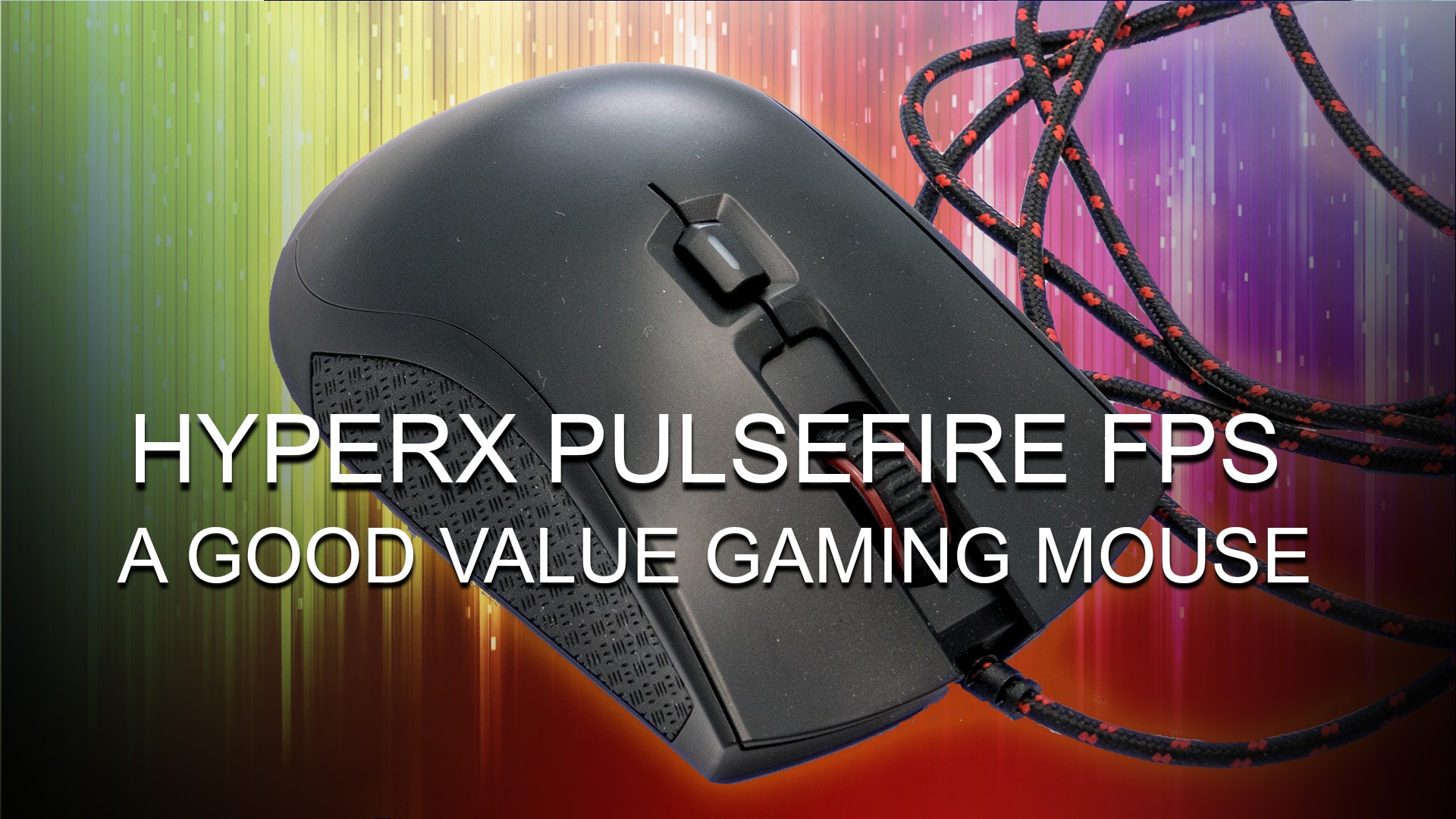
As we have come to expect from HyperX their HyperX Pulsefire FPS mouse comes in a shipping container that is as stylish as it is practical. The outer cardboard sleeve contains all the information you will need to make an informed decision, while the interior’s combination of a thick cardboard box and plastic protective housing will almost assuredly ensure the mouse itself will survive all but the harshest of handling while in transit – whether across town or across the continent.
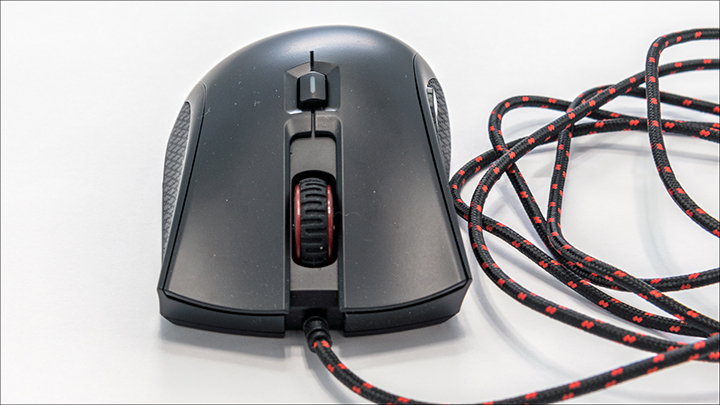
When it comes to ergonomics there are basically three types of mice users. Claw, fingertip, and palm users. Each of these three group of users literally hold their mice differently than the others. Palm users make up the majority of mice users and as they name suggests they ‘palm’ the mouse with their fingers laying flat down the entire length of the main left/right buttons, their thumb gripping the side of the mouse and their palm resting on the back half of the mouse. To move the mouse palm’ers mainly use their entire forearm.
Fingertip users literally only hold the mouse with their fingers and either use their fingers, wrist or their entire arm (for larger movements) to move the mouse. Claw users are… odd. They palm the mouse but instead of laying their fingers flat along the buttons they just have the tips of their fingers on the buttons – much like if they were going to throw a knuckleball.
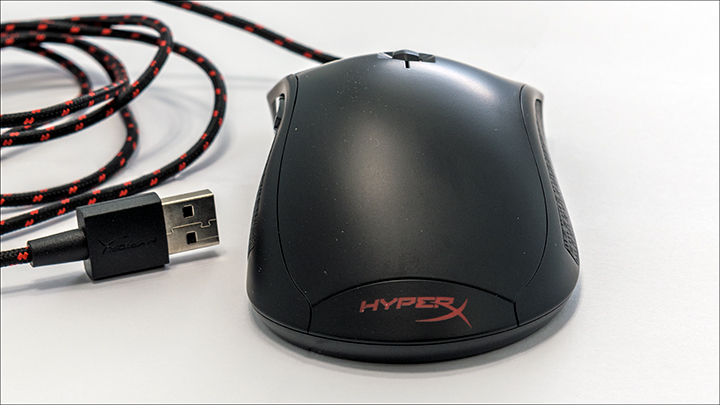
Each of these buyers require different things for an optimal fit, for example palm users need a higher arch and claw grip holders need a very low arch, however by giving up a little in each department mice manufactures have come to realize they can make a fairly universal design that will work for all three groups (though claw users usually get a bit of a short stick in the process… and if you are a claw grip kinda of person… get a claw grip designed mouse if you want the most ‘comfortable’ mouse possible). Every company spends a countless fortune on ergonomic design every year. But it really was not until 1998 and Microsoft’s IntelliMouse Pro that they became longer and thinner with a moderately high arch that worked pretty decent for both palm and fingertip users. It was however really only comfortable for right handed users.
Then Logitech and their MX300 came on the scene in 2002 and modern ambidextrous desings were born. This design added in an even longer shallower slope to the top of the mouse and removed the slope to the ‘hump’ so as to be comfortable for even wider range of users. It really was not until 2006 that Razor and their DeathAdder series added in ‘button flaring’ at the front and modified the arch height that this ‘new universal’ design was solidified. This is why calling the HyperX Pulsefire FPS a ‘DeathAdder clone’ is doing a disservice to both devices. Both pay homage to previous designs that neither created. Both are improvements on MS and Logitech’s original ergonomic designs. Neither is truly a new mouse design.
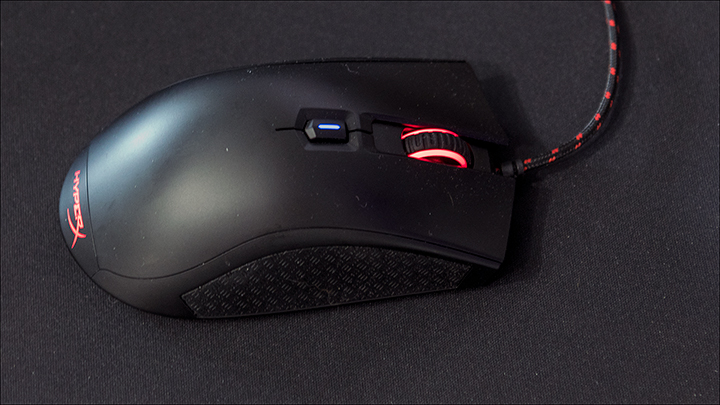
Put simply the HyperX Pulsefire FPS does indeed borrow heavily from the DeathAdder but the button layout is different, and it borrows almost as heavily from even earlier designs as it does the DeathAdder. There just are only so many ways to make a universal style mouse and until someone comes along and builds a better mousetrap they are all going to look very similar.
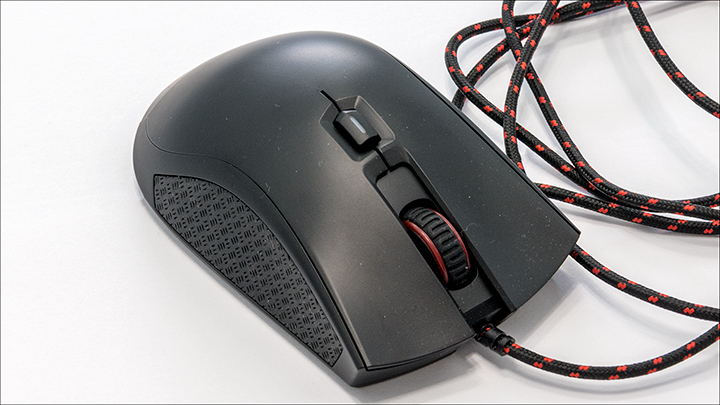
So, let’s actually compare and contrast these two mice. First this is not really a fair comparison. The standard Pulsefire FPS is the more entry level version of HyperX’s gaming series. A truly fair comparison would be between the Pulsefire Pro and the DeathAdder Elite… but the standard model is arguably the better value and that is why we chose it for this review. So with that caveat recognized and taken care of, the latest generation of Razor’s DeathAdder series is the DeathAdder Elite. This mouse uses the Pixart 3389 sensor, added in two extra buttons (just behind the wheel) to the basic DeathAdder design, has two oversized thumb buttons on the side, has an LED enable scroll wheel, has a tightly braided USB cable, and has a big glowing logo in the palm area of the mouse chassis.
The HyperX Pulsefire FPS uses the older Pixart 3310 controller, has two smaller thumb buttons, only has one button on the top, the top button, the scroll wheel, as well as a HyperX logo at the back of the mouse are LED enabled. Both series do have similar body design, with similar finger button flaring that allows for a better grip during heavy FPS sessions. Both use Omron mechanical switches. Both are optimized for palm and fingertip users. Both are less than optimal for claw grip users. Both use slick plastic for the top of their chassis…. that is usually a dust magnet. The Razor DeathAdder Elite tips the scales at about 105 grams, while the HyperX Pulsefire FPS is noticeably lighter at a mere 95 grams. That list bit may not sound like much of a difference but the HyperX is down right easy to lift and reposition… even after hours of gaming. So they are similar but not the same.
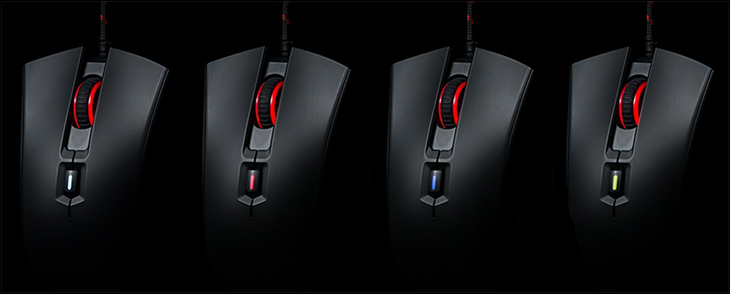
The lone top button on the HyperX Pulsefire FPS allows for quickly changing the DPI setting of the sensor and at the same time changes the LED colors. As there is no software there is no customization of the LED colors or DPI settings. Instead the wheel and logo will glow RED and only red. However, the small led built into the top button will change color depending on DPI setting. At the lowest DPI setting of 400 will result in a white glow from it. 800 DPI setting will give you red accent on the button. 1600 DPI will give you blue, and at 3200 DPI the button LED will glow yellow. As there is only one button you have to cycle through all the settings before being able to lower the sensor’s resolution. This is where Razor does have a distinct advantage as its LEDs are truly customizable and so too are its DPI settings. This does however come at the expense of needing software to actually get a fully functioning mouse. Whereas the HyperX Pulsefire FPS is a truly plug and play model.

The largest difference is actually in the side buttons. By using much more reasonably sized thumb buttons HyperX was able to include a rather large rubber grip area. This large rubber molding allows for thumb sizes of all length the ability to properly grip and keep gripping the mouse even when your hands are sweaty and the action is hot and heavy. This is not entirely true of the DeathAdder. Razor’s larger buttons simply take up more real-estate on the side of the mouse. This necessitates a much more nuanced approach to thumb positioning. We have large thumbs and many times our (now gone) Razor DeathAdder slipped from our grasp when we were lifting and repositioning the mouse. That is why it is no longer in our possession. The HyperX Pulsefire FPS on the other hand never, ever slipped from our grasp – and we have been using this mouth exclusively for 8 weeks to make sure it would not, could not happen. Two hundred hours of gaming marathon sessions later and the HyperX Pulsefire FPS is truly the superior device from a physical design perspective.

On the sensor front the ‘old’ Pixart 3310 sensor may indeed have been released back in 2016 and tops out at ‘only’ 3200DPI… that is not the same as saying it is a bad choice. It simply is not as precise as the Pixart 3389 that Razor uses. 3200DPI is a heck of a lot more than most people will ever need – yet alone actually use – so the extra sensitivity of the Razor DeathAdder’s 16000DPI is almost a non-issue. There are some people who will find this limitation disappointing but we have yet to see any optical sensor-based mouse work on every surface type every time. They all work optimally a mousepad and are basically a de-facto requirement. We have also yet to see any one use 16000DPI settings for their mouse. Instead many use the 1K range as that is fast without being too fast. There are always exceptions to this, as some people really do have the level of movement precision required to make 16K DPI ‘work’, but we doubt many will really notice the difference in DPI. They may however notice the lower precision – as the newer optical sensors are ‘smarter’ with lower chances of not ‘seeing’ a change in their image scan… even on the best mousepad available. It is rare but it can happen.
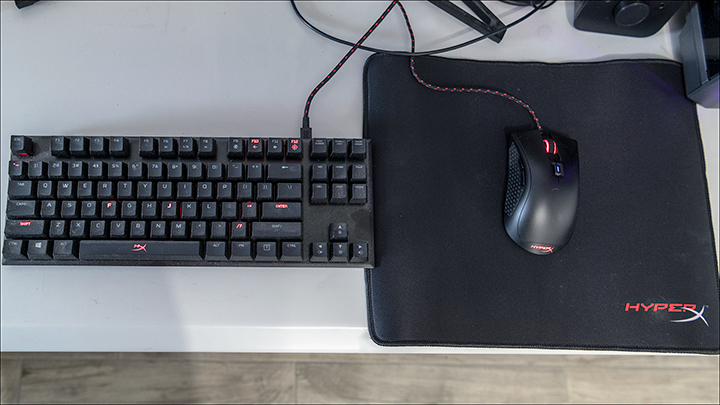
On this front HyperX’s Fury S (‘medium’) mousepad is pretty darn good. One side is extremely slick and the other is highly textured. Since it is 360mm by 300mm in size it is large enough to be useable regardless of the DPI settings of your mouse, but not so large as to be unwieldy on a desktop. The same is true of its 3mm thickness – which is all but unnoticeable. Better still it is not nearly as pretentious looking as most ‘gaming’ mouse pads. Instead its black cloth with only small red HyperX logo will blend nicely even in work place environments. The fact it only costs fourteen bucks is simply icing on the cake.
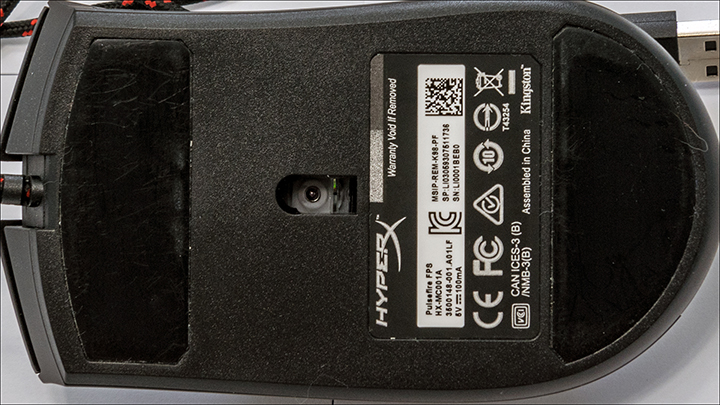
In fact, when you pair this mat with this mouse the end result is an incredibly smooth movement. Some of this due to the soft weave of the Fury S mat, but most of it is due to the two massive PTFE ‘glide pads’ on the bottom. Quite literally both of these pads go from edge to edge, and cover nearly half of the entire bottom of the mouse. This too stands in stark contrast with Razor… which have always cut corners on the size of their glide pads.
If you then go for the ‘full HyperX ecosystem’ and add in their excellent Alloy FPS pro keyboard… the end result is pure gaming nirvana that can also do double duty for work or school orientated tasks. This too stands in stark contrast to Razor’s ‘ecosystem’ where the best we can say about their keyboards is… that sure look purdy.
Last but certainly not least is the asking price. The HyperX Pulsefire FPS will set you back only $50, while Razor’s latest and greatest costs well north of $90. Put another way you can get nearly two HyperX Pulsefire FPSs for the same as one Razor.
So, when you combine good real-world abilities, with good ergonomics, and then add in a killer asking price… giving up software customization and even higher DPI abilities is not that great of a hardship to say the least.
